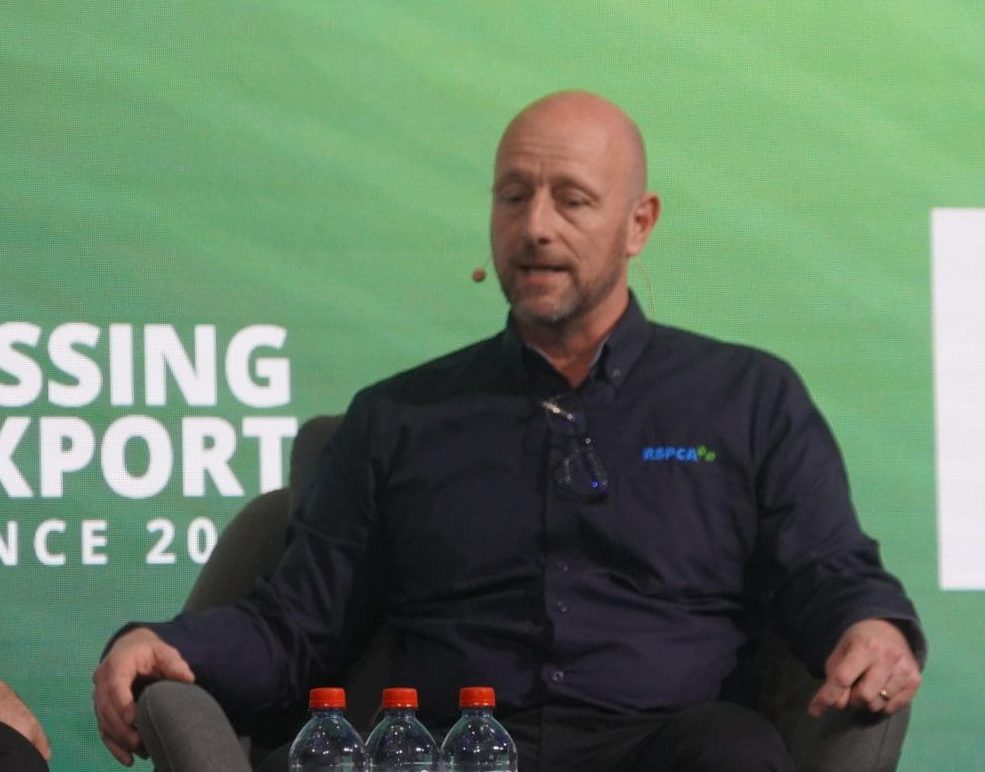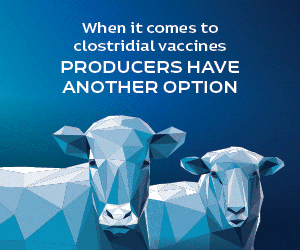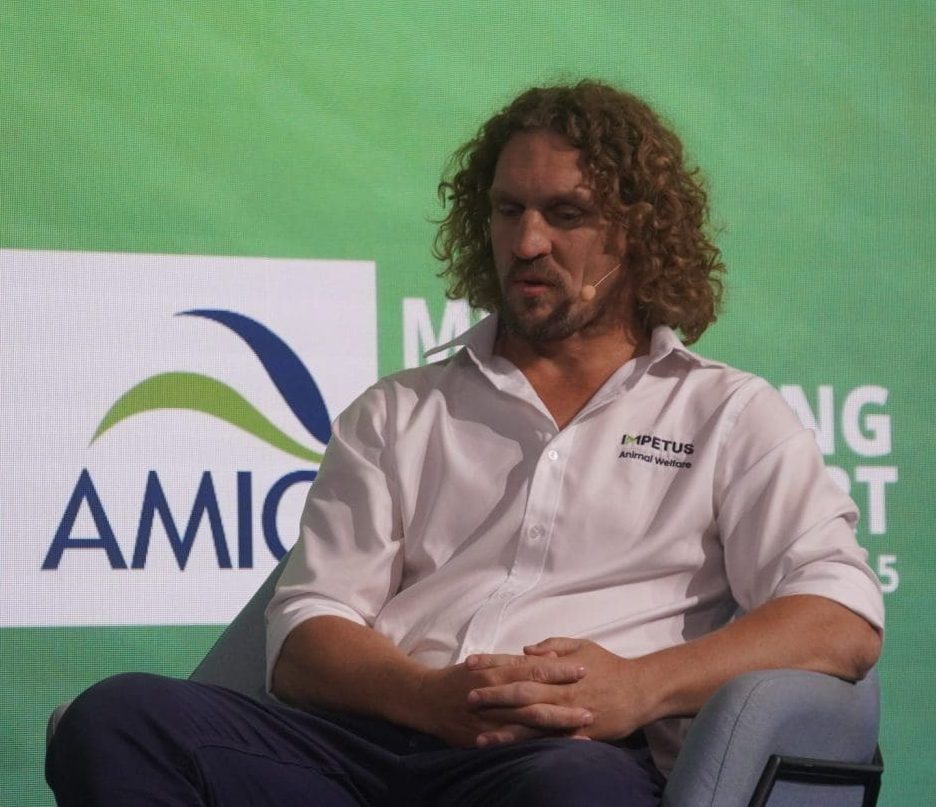
Taking part in the animal welfare discussion were moderator Leigh Sales, veterinarian and animal welfare specialist Dr Michael Patching, RSPCA chief executive Richard Mussell and Queensland beef processor and lotfeeder Terry Nolan.
TRANSPARENCY, the need for harmonisation of standards and finding ways to better tell the industry’s story were common themes explored during an animal welfare panel session staged during the recent Meat Processing & Export conference on the Gold Coast.
Taking part in the discussion were veterinarian and animal welfare specialist Dr Michael Patching, RSPCA chief executive Richard Mussell, Dr Sarah Bolton from the University of British Colombia’s animal welfare program, and Queensland beef processor and lotfeeder Terry Nolan.
CCTV in plants an important step, but more to be done says RSPCA
Panelists were firstly asked how they rated the 2025 meat processing sector’s performance in animal welfare.
The RSPCA’s Richard Mussell acknowledged that the uptake of CCTV in the red meat processing industry was a big advancement, and RSPCA congratulated the industry for achieving it.
 “We know it wasn’t something that was easy for everyone, but it is very important, and a big move,” he said.
“We know it wasn’t something that was easy for everyone, but it is very important, and a big move,” he said.
“Moving forward though, the things that are important from an animal welfare perspective come back to the transparency around the industry, improving the regulations and legislation at a legal level, above industry standards.
In the area of transparency, Mr Mussell highlighted information sharing.
“We know there’s some good things happening in the processing sector, but also some bad things. More needs to be done in talking about the good things that are happening, but it’s a very complex area of animal welfare, as we know. But the industry standards (CCTV) are a good first step.”
New frontier
Asked the same question about how the industry’s animal welfare performance was going in 2025, Dr Sarah Bolton (involved remotely via Skype) made the point that the concept of animal welfare and the science that surrounded it, and the conversations being had within and outside the industry over animal welfare were still relatively new.
 “It’s really only been in the last handful of decades that animal welfare has been recognised as a significant or legitimate area of science. But we’ve come a really long way in a relatively short space of time,” Dr Bolton said.
“It’s really only been in the last handful of decades that animal welfare has been recognised as a significant or legitimate area of science. But we’ve come a really long way in a relatively short space of time,” Dr Bolton said.
“But through that process, we’re constantly learning more and more about how we should be managing animals for optimum welfare outcomes. So there’s always going to be a ‘long way to go’ if that horizon is constantly moving further away.”
“That’s a good thing, because the opportunities for continuous improvement are huge.”
But animal welfare was no different than many other areas of business where change was a constant process – whether it be workplace safety, technology or digital security.
“We live in a changing society, and animal welfare is just a key piece of that. It’s something that within our day-to-day work, we need to line up with all those other areas that are constantly progressing.”

Michael Patching
Michael Patching, a regular columnist for Beef Central, said it was important to establish some sort of working definition of animal welfare. If it was accepted that animals can experience pain, suffering, fear and stress, while also experiencing happiness (no different to humans), it was therefore the industry’s responsibility to minimise those negative experiences, and where possible, encourage the positive ones.
“Especially in abattoirs, where we have a stressful environment where cattle come together in a complex environment, these risks will continue to exist – but it’s our responsibility to look at how we can continue to address those,” Dr Patching said.
“There’s a compliance element to that, as to where science thinks we need to be right now, and then there’s obviously consumer perceptions around things we need to do. That will continue to evolve, because animals do experience some sort of pain and stress.”
Mr Mussell said there was acceptance around the physical aspects of animal welfare around health ands nutrition, for example – but it was the area of the animals’ ‘mental state’ where it started to get harder for people to understand – especially in production animals, but also in areas like sports and recreation.
Through-chain issue
Beef processor Terry Nolan said there was no doubt that animals experience fear and pain, and it needed to be looked at in a holistic, whole-of-supply chain approach.
“There’s focus at this conference on the meat processing stage – and rightly so – but animal welfare extends right along the production chain. It starts back on the farm. But for many years, we’ve been lobbying for better transport through programs like Fit to Load, but we don’t see that transfer of liability, from an unwell animal that should never travel, being put on a truck and sent to an abattoir – for us to deal with.”
“We (processors) are a collection point for everybody else’s mistakes,” he said.
Mr Nolan said at the very first meeting of the Australian Meat Industry Council in 2003 (following the merger of the old AMC and NMA bodies), livestock transport issues came up.
“We wanted to have a base standard, and didn’t think the original version was good enough,” he said. “By about 2005, AMIC published its first (voluntary) Animal Welfare Standards. Industry is very, very supportive of standards, and we want to improve standards all the time – so much so, that in 2009, a second revised set of standards was released.”
In 2011 (Mr Nolan was AMIC chair at the time), AMIC wrote to the Queensland state agriculture minister, seeking a (mandatory) minimum standard.
“We felt that we were capturing a big group of processors within the voluntary processing standard – 90 percent of beef cattle are processed under the AAWCS voluntary standard. But there is still that 10pc of outliers. We wanted some basic underpinning to pick up the ones (processors) who did not want to be a part of it.”
“We are very conscious of the whole of industry approach, and in 2013, AMIC asked AUSMeat to audit the AAWCS standard.
“But to this day – 2025 – we still do not have harmonised standards, which is one of those issues with multi-level and multi-jurisdictional government, each with different standards. Even at Federal level, DAFF defaults back to the state jurisdictions on matters like animal welfare.”
“Industry has done all it can, but it is a bit of a mixed pie. But we’re evolving, and as times change, we need to continue to evolve in areas like animal welfare,” he said.
“As an industry, we need to breed cattle with respect, grow them with respect, slaughter them with respect – while looking at minimising all of those antagonistic behaviours. They only way we can do that is to put in systems, underpinned by appropriate standards.”
Self regulation versus oversight
The panel discussion then turned to self regulation versus mandatory government oversight in areas like animal welfare.
Dr Sarah Bolton from the University of British Colombia’s animal welfare program said in Australia, both of those forces were sitting on a bell-curve.
Generally in terms of how animal welfare is approached in Australia, we tended be be much more about the carrot than the stick, she said.
“Across most of our animal-based industries, we tend to see more of an emphasis on industry-led adherence to certain standards. If we think about a bell curve, we have industry-led at the leading edge, and then government legislation bringing up the tail of the bell curve – animal cruelty legislation in Australia, for example.”
“In other regions, such as Europe, for example, we see more of an appetite for government regulation down to a finer level of detail.”
Looking back over the last decade in Australia, there had certainly been a move towards industry-led regulation, Dr Bolton said – and that was certainly not a bad thing when it comes to social license and trust with the broader community.
“It’s this notion among the public that they don’t understand what farmers do, and aren’t experts in what’s being done – but the farmer is, and they should be the ones holding themselves to a certain level of operation that speaks to the very meaning of a social license to operate.”
Michael Patching said he wasn’t going to come out and say the industry needed more regulation, but the biggest issue he had generally on this topic was the need for harmonisation of standards.
“The standards themselves are important, but just having harmonisation between the states, and between domestic and export abattoirs – making it really clear what the minimum standard is – is important.
“As long as everybody is on the same playing field – whatever that is that’s being regulated – will be OK.”
- More on the AMIC conference animal welfare panel session discussions tomorrow

HAVE YOUR SAY